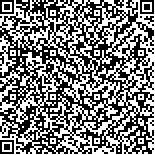文青,毛孝容,唐小丽,等.冠心病PCI治疗患者院外早期康复阶段体力活动水平及影响因素分析[J].中华物理医学与康复杂志,2025,47(9):792-798
扫码阅读全文

|
| 冠心病PCI治疗患者院外早期康复阶段体力活动水平及影响因素分析 |
|
| |
| DOI:10.3760/cma.j.cn421666-20250217-00140 |
| 中文关键词: 冠心病 经皮冠状动脉介入治疗 体力活动 影响因素 |
| 英文关键词: Heart disease Percutaneous coronary intervention Physical activity |
| 基金项目: |
|
| 摘要点击次数: 562 |
| 全文下载次数: 387 |
| 中文摘要: |
| 目的 分析经皮冠状动脉介入治疗(PCI)后的冠心病患者在院外早期康复阶段其体力活动水平及影响因素。 方法 选取2023年11月至2024年4月期间在四川省某三级甲等综合医院首次行PCI治疗且出院时间小于6个月的冠心病患者作为观察对象,采用一般资料调查问卷、国际体力活动问卷长卷、中文版Tilburg衰弱量表、社会支持量表及Barthel指数量表进行调查;采用流行病学描述性方法对患者体力活动水平进行分析,采用多因素Logistic回归分析探讨影响患者体力活动水平的相关危险因素;通过绘制受试者工作特征曲线(ROC)评估上述危险因素对冠心病PCI术后患者院外早期康复阶段体力活动水平的预测价值。 结果 本研究共纳入394例患者,低水平体力活动者有117例(占30%),中水平体力活动者有202例(占51%),高水平体力活动者有75例(占19%)。单因素分析结果显示不同水平体力活动患者在年龄、慢病共病、衰弱及生活自理能力方面存在统计学差异(P<0.05);多因素Logistic回归分析显示高龄、慢病共病、衰弱及自理能力低下是冠心病PCI术后患者院外早期康复阶段低水平体力活动的危险因素(P<0.05)。ROC曲线分析结果显示,联合上述4个危险因素预测患者院外早期康复阶段体力活动水平的 ROC曲线下面积为0.888(95%CI 0.838~0.939),敏感度为0.894,特异度为0.801。 结论 冠心病PCI术后患者在院外早期康复阶段其体力活动多处于中等偏下水平,医护人员应针对患者年龄、慢病共病、衰弱及生活自理能力情况给予针对性干预,从而提高其体力活动水平。 |
| 英文摘要: |
| Objective To analyze the physical activity level of patients treated with a percutaneous coronary intervention (PCI) for coronary artery disease in the early out-of-hospital recovery phase, and the factors influencing it. Methods Patients who had been discharged within the previous 6 months after their first PCI treatment were surveyed using a general information questionnaire, the long form of the International Physical Activity Questionnaire (IPAQ), the Chinese version of the Tilburg Frailty Scale, the Social Support Rating Scale, and for their ability in the activities of daily living. Epidemiological descriptive methods were used to analyze the reported physical activity levels, and multifactoral logistic regression was applied to explore the influencing factors. The receiver operating characteristics (ROC) curve was drawn to evaluate the predictive value of the risk factors. Results A total of 394 former patients were surveyed, including 117 (30%) reporting a low level of physical activity, 202 (51%) describing a moderate level and 75 (19%) claiming a high level. The univariate analysis revealed significant differences in physical activity levels among those of different ages, with different chronic co-morbidities, and with different frailty and self-care ability. Multifactoral logistic regression analysis showed that advanced age, chronic co-morbidities, frailty and little self-care ability are significant predictors of a low level of physical activity. The area under the ROC curve for predicting the physical activity level by combining those four factors was 0.89 (95% CI 0.84-0.94), with a sensitivity of 0.89 and a specificity of 0.80. Conclusions The physical activity level of patients treated with PCI for coronary disease is moderately low early after their release from the hospital. Targeted intervention to increase it is called for. |
|
查看全文
查看/发表评论 下载PDF阅读器 |
| 关闭 |
|
|
|